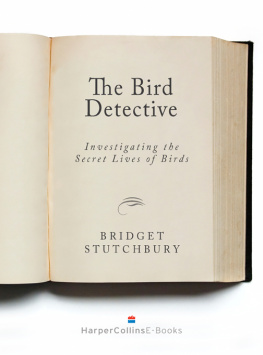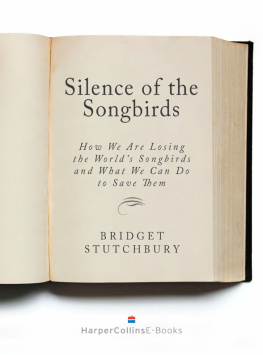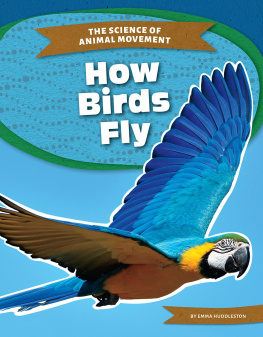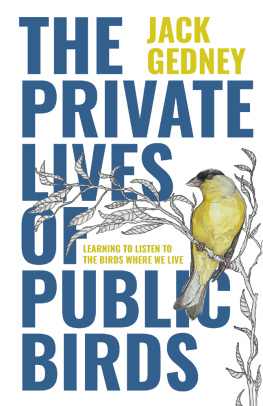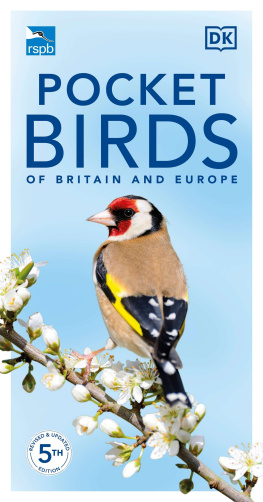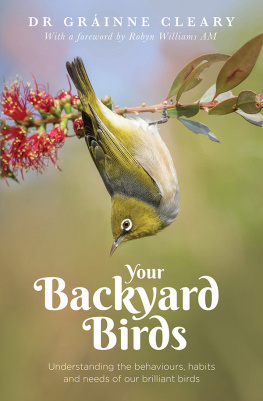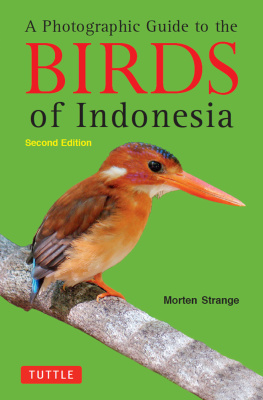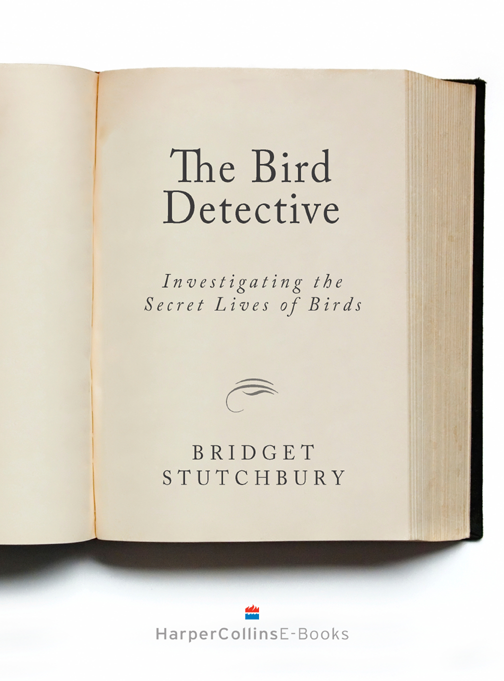I thought of my friends who never take walks
for there was nothing to see.
I was amazed and grieved at their blindness.
I longed to open their eyes to the wonders around them;
to persuade people to love and cherish nature.
Margaret Morse Nice (1937),
pioneering ornithologist and author of
The Watcher at the Nest
T he first time I hiked through the forest that is now my summer home, I was blind and deaf to the secret lives of its inhabitants. It was June 1990, and I was in the final months of my PhD studies at Yale University and ready for a change. After spending the previous five years studying how swallows fight for nest boxes I had decided that my next research project would be on a small forest bird. No more birdhouses and lawns for me! I was in northwestern Pennsylvania, visiting the Hemlock Hill forest that would be my study site the next spring and, though I didnt know it at the time, for many years to come. On the long drive I had dutifully studied my field guide and listened to birdsong tapes in my pickup truck. I was eager for a glimpse of my new study species, the hooded warbler, which I had never before seen or heard. This handsome little bird is unmistakablemales have a black crown and bib that contrasts sharply with bright yellow cheeks and a yellow belly.
I heard plenty of birds singing in the forest and could pick out some of the familiar characters: the rose-breasted grosbeak who sounded like a crisper version of a robin, the wood thrush with its beautifully complex and resonating voice, and the chestnut-sided warbler who cheerfully greeted me at the forest edge with a raspy pleased, pleased, pleased to meet cha. Even though it was a bright, sunny morning, the forest floor was dark with shadows from the closed canopy of leaves overhead. Birding by ear is relaxing, but actually spotting the songsters involves some frustration and disappointment. I heard several renditions of the high-pitched hooded warbler song I had memorized, weeta weeta weet-e-o, but I saw only one bird, a female who flashed her white outer tail feathers several times while barking a metallic chip call of alarm, and then promptly disappeared into a tangle of wild raspberry.
When I returned to Hemlock Hill the next spring, I realized the forest was full of hooded warblers, and from one spot I could hear half a dozen males singing. Of course the warblers had been there the year before, but my untrained ears had not been able to pick them out among the chorus of other songs.
Ive now spent twenty years hunting in this forest with my binoculars and notebook as a biology professor, and know the terrain and birds like the back of my hand. The soft chiff from the hemlocks by the stream is a female Acadian flycatcher, the nasal yank above my head is a blue-headed vireo that is near its nest or mate, and the chee chee chew up chew up is one of the many songs of the hooded warbler. Three years ago, the broken-off hemlock near the thick grapevine tangle halfway up the stream held a hidden treasurea hard-to-find scarlet tanager nest.
My favourite forest bird is the scarlet tanager; males are a stunning, brilliant red with contrasting jet black wings. Despite their flashy colour and bold song, males become very quiet after pairing and are hard to see. Male tanagers seem to disappear into the canopy and spend most of their time near their mates. During nest building, the female flies to and from the nest and does virtually all the construction while the male sits quietly a short distance away, keeping a close eye on her.
I remember the first time I heard a soft, rising pew, pew, pew sound overhead and guessed that its owner was a vireo, grosbeak, or flycatcher (wrong on all counts). This subtle call of the female scarlet tanager is a magnet for the male, who upon hearing it promptly flies over to perch near her. This is a sound I learned only after spending many hours watching scarlet tanagers and, although scarlet tanagers are popular birds, this particular sound is not to be found on bird identification CDs. A friend who specializes in recording and producing such audio field guides remarked that he had no idea that scarlet tanagers even made these sounds. Yet most female tanagers communicate with their mates in such a manner, and this seemingly unremarkable sound of the forest is rich with meaning and consequences for the intended audience.
Males are especially attentive to their mates during incubation because they deliver food to the female. Male tanagers are usually quiet when near the nest, but it is hard to be secretive when you are the colour of a stop sign. The male does not boldly announce his presence but instead perches about 20 metres from the nest with a nice caterpillar in his beak, and sings his song very, very quietly. I call this whisper song; it has a ventriloquial effect, and I know I am not imagining things because I can see his beak opening and closing slightly in rhythm to his throaty robin-like song. The female, who is on her nest, looks over at him and starts quivering her wings and making a loud, grating, begging call that sounds much like that of a large nestling. Watching the bright red male fly right to the nest, and listening to the females loud calls, I cant help wondering how this nest could escape the attention of predators like blue jays and crows. Other female tanagers are more cautious, and fly off the nest to get food from the gaudy male.
To find out why male scarlet tanagers are so preoccupied with feeding their mates, I recently conducted a study with my colleague Paul Klatt, who is a biology professor at Ferris State University in Michigan. Paul spent three summers at the Hemlock Hill forest relaxing on a reclined camouflage-patterned lawn chair and peering at tanager nests high overhead in the forest canopy. He wrote all his notes in a small spiral-bound notebook: 7:23 a.m. Female off the nest, flew to the male, begging, male fed. Pair foraged together quietly, within 15 m of each; 7:29 a.m. Male fed female; 7:35 a.m. Female back on nest.
Females who were fed often by their mates spent more time on the nest incubating, which suggests that females gain nutritionally from the males help. But we also found that the extra time on the nest did not translate into higher nest survival, so by the end of summer females that had received little aid had produced just as many broods as well-fed females. We were puzzled why males worked so hard to feed their mates if, in the end, this did not benefit the male by increasing his nesting success.
This domestic scene could be interpreted easily as simple parental co-operation; its hard work raising a family and this job is better accomplished with the efforts of both parents. Only the female incubates the eggs, and her breaks from incubation duties are short because the eggs have to stay warm; male food deliveries help to make up for the limited time she has for feeding herself. There is more to the story, however, because the social lives of birds are also driven by selfishness, conflict, and competition.
Paul and I wanted to know what the female would do if the male did not come with his little treats. After watching a pair for several hours under normal conditions, we caught the male and I took him to a covered birdcage far off the territory. Meanwhile, Paul watched the female intently to gauge her reaction. The female typically sat on her nest incubating the eggs, as expected, but remained there twice as long as normal, as though waiting for her mate to arrive with food. When the female finally did leave her nest, often after an hour of waiting, she began giving harsh alarm calls,

